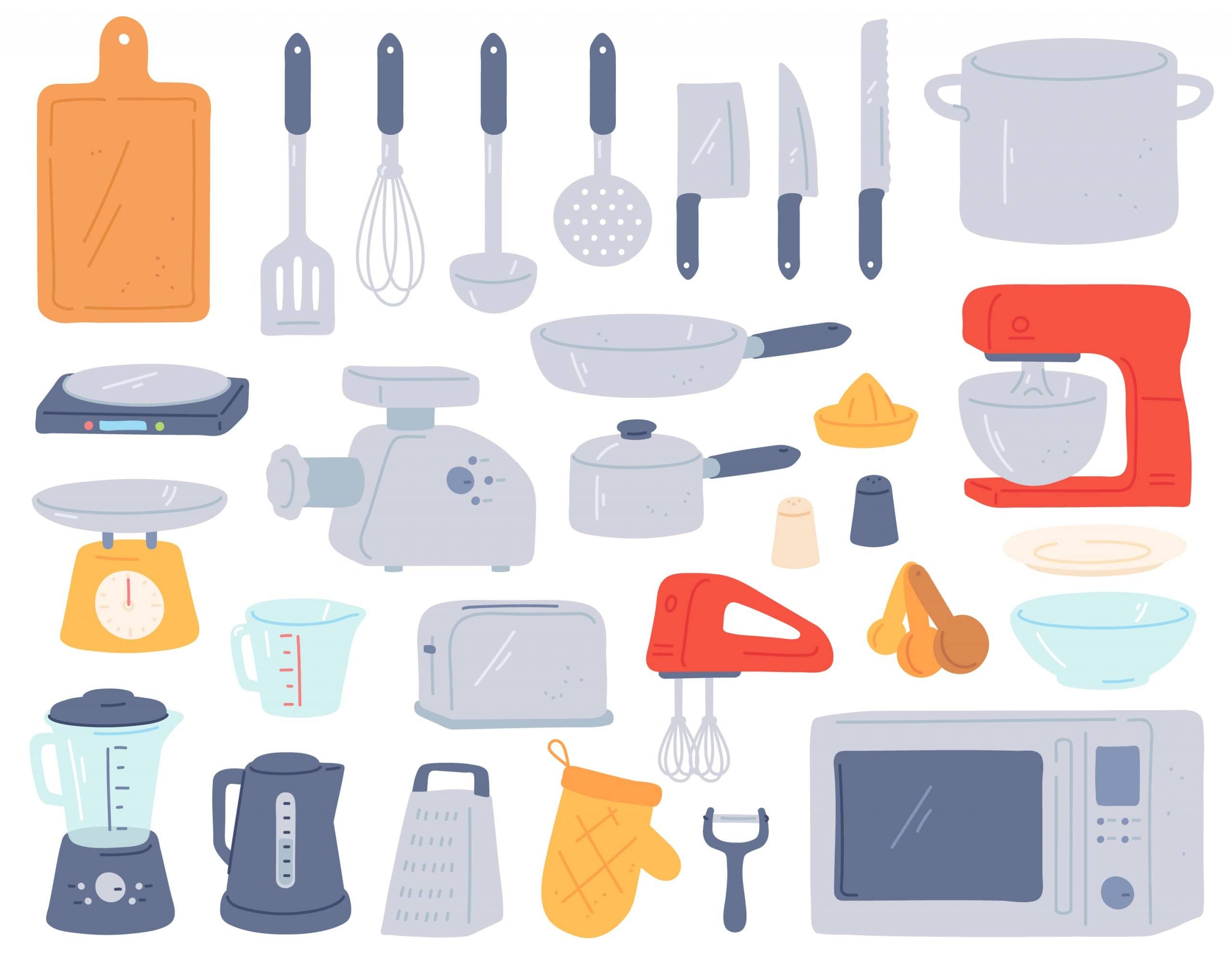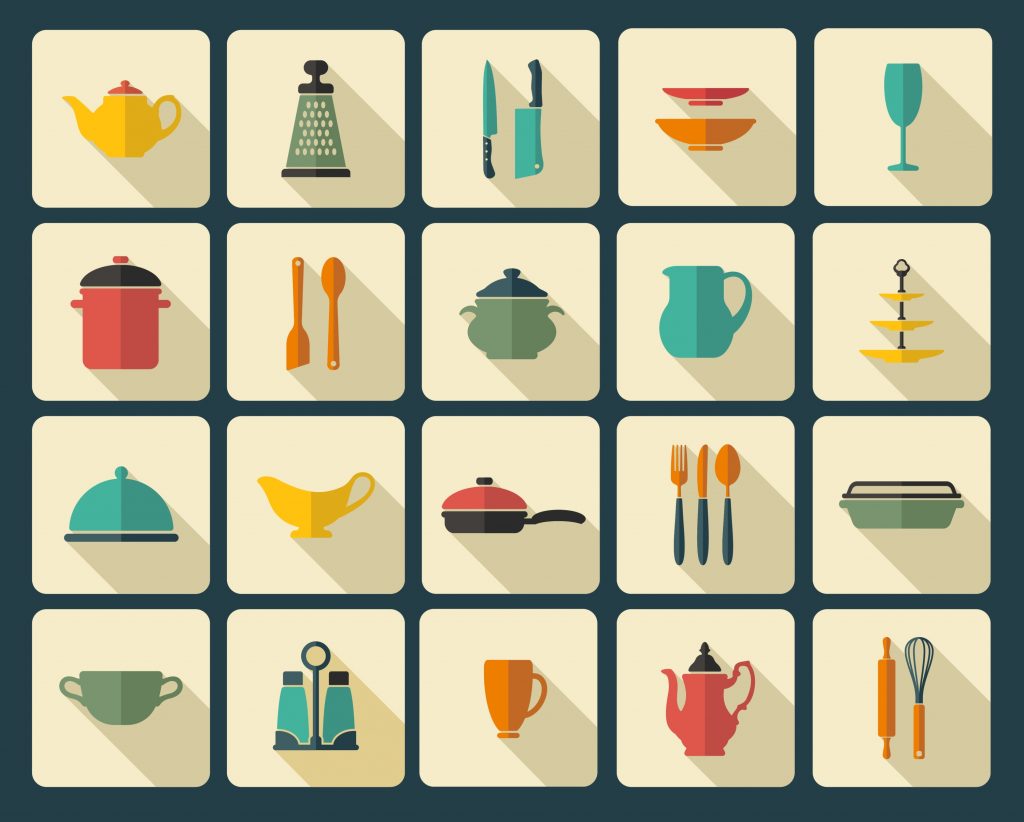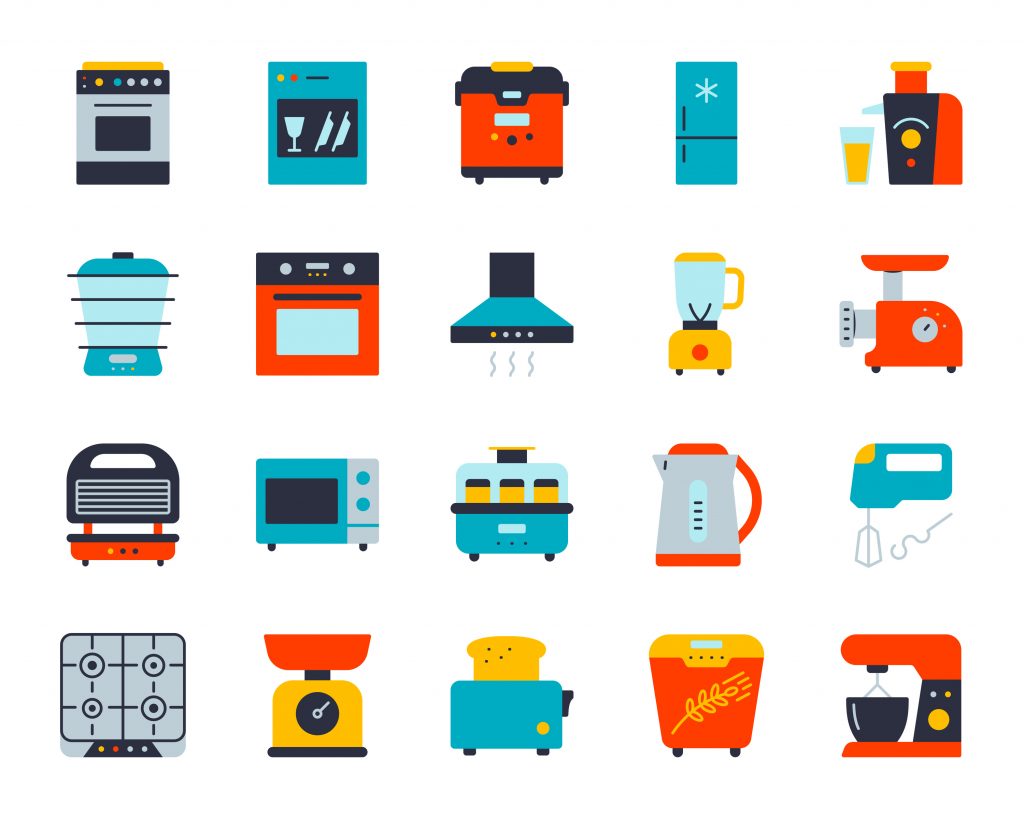As you learn Korean, all the words related to how to cook in Korean and the tools needed can be another fun lesson for you to tackle.
You might be in South Korea attending a cooking class or identifying the tools you need to use to cook dinner. Or perhaps you’re explaining how to make your favorite dishes when you’re in your home country. Either way, the following words you’ll learn will prove useful on many occasions and may help lessen your cooking time, too!
Let’s learn Korean through all the vocabulary for the tools, appliances, and utensils you’ll need when you cook, from the English language to Korean.
Contents
How to say “cook” in Korean
The word “cook” in English may have different definitions depending on whether it’s used as a verb or a noun in sentences. Here are their terms in Korean.
“Cook” in Korean (Noun)
If you’re pertaining to “cook” in Korean as a noun, you can say it as 요리 (yori). As a noun, it can also be said as 요리사 (yorisa), which means “chef.”
“Cook” in Korean (Verb)
The word for “cook” in Korean as a verb is 요리하다 (yorihada). This is made up of 2 words, which are 요리 (yori) and 하다 (hada), where 요리 (yori) means cook and 하다 (hada) is to do. 요리하다 (yorihada) can be translated as “to cook.”
Essential Kitchen Vocabulary in Korean
You may eat or cook in different cuisines like French, Japanese, Italian, German, Dutch, Danish, and the like. Each cuisine creates delicious meals using the tools listed. For now, we’ll focus on the Hangeul translation of each word in English below. This may also be useful and essential if you want to teach your friend how to cook your home country’s cuisine!
Korean Cookware Vocabulary
The term for “kitchenware” or “cookware” in Korean is 취사도구 (chwisadogu).
These are the common tools used to prepare and cook food.
| English | Korean |
|---|---|
| Skillet (Frying Pan) | (naembi) (peuraipaen) |
| Braiser | (beuheje) |
| Slicer | (seullaiseo) |
| Kitchen Scale | (joriyong jeoul) |
| Mixing Bowl | (miksing bol) |
| Chopping Board, Cutting Board | (doma) |
| Mandolin | (mandollin) |
| Stock Pot | (yuksu naembi) |
| Kettle | (jujeonja) |
| Rubber Gloves | (gomujanggap) |
| Food Container | (yonggipojang), (sikpum) (bogwanyonggi) |
| Mortar and Pestle | (makjasabalgwa makja), (jeolguwa jeolgu gongi) |
| Stone Pot | (dolsot) |
| Earthenware Pot | (ttukbaegi) |
| Grinder | (ganeun gigu) |
| Strainer, Colander | (yeogwagi), (georeugae), (che) |
| Sauce Pan, Pot | (naembi) |
| Sheet Pan | (siteu paen) |
| Baking Dish | (beiking jeopsi) |
| Can Opener | (kaen opeuneo), (kkangtongttagae) |
| Zester | (kkeopjilbeotgigae) |
| Salad Spinner | (chaeso talsu baguni), (chaeso talsugi), (chaesogeonjogi) |
| Wok | (wok) |
| Saute Pan | (sotepaen), (bokkeumyong paen) |
| Grater | (gangpan) |
“Pot” in Korean
The word “pot” in Korean is 냄비 (naembi). This word also translates to “saucepan” in English.
There are also different types of pots that have other specific Korean terms. “Stock pot” in Korean is 육수 냄비 (yuksu naembi), “stone pot” in Korean is 돌솥(dolsot), while “earthenware pot” is called 뚝배기(ttukbaegi) in Korean.
“Wok” in Korean
“Wok” in Korean is 웍.
It sounds the same as its English counterpart (wok), so it’s easy to remember.
Korean Utensils Vocabulary
There are two ways to say “utensils” in Korean. You can say it as 밥그릇 (bapgeureut) or 기구 (gigu).
These handheld tools used to cook are ultimately important, from the preparation of food to dining.
| English | Korean |
|---|---|
| Knife | (kal) |
| Spatula | (jugeok), (dwijipgae) |
| Measuring Spoon | (gyeryangseupun) |
| Rice Paddle | (bapjugeok) |
| Scissors | (gawi) |
| Measuring Cup | (gyeryang keop) |
| Peeler | (kkeopjil beotgineun kal) |
| Whisk | (geopumgi) |
| Tongs | (jipge) |
| Meat Tenderizer | (yeonyukje) |
| Fork | (pokeu) |
| Spoon | (sutgarak), (seupun) |
| Chopsticks | (jeotgarak) |
“Chopsticks” in Korean
You can say “chopsticks” or “a pair of chopsticks” in Korean as 젓가락 (jeotgarak). If you’re referring to wooden chopsticks, you can use the word 나무젓가락 (namujeotgarak). On the other hand, “metal chopsticks” in Korean are called 금속 젓가락 (geumsok jeotgarak).
Korean Kitchen Appliances Vocabulary
The term for “kitchen appliances” in Korean is 주방용품 (jubangyongpum).
These cooking appliances are most relevant to the actual cooking process.
| English | Korean |
|---|---|
| Rice Cooker | (bapsot) |
| Microwave | (jeonjareinji) |
| Blender | (bunswaegi), (mikseogi) |
| Oven | (obeun) |
| Stove | (reinji) |
| Toaster | (toseuteo) |
| Coffeemaker | (keopimeikeo) |
| Fridge | (naengjanggo) |
| Freezer | (naengdonggo) |
| Electric Whisk | (jeongi geopumgi) |
| Grill | (geuril), (seoksoe) |
| Gas Burner | (gaseubeoneo) |
| Food Processor | (manneung jori gigu) |
| Slow Cooker | (jeongi jjimsot) |
“Oven” in Korean
The Korean word for “oven” is 오븐 (obeun). However, if you’re referring to a microwave oven in Korean, you can say 전자레인지 (jeonjareinji).
“Rice cooker” in Korean
The word for “rice cooker” in Korean is 밥솥 (bapsot). This is a combination of the words 밥 (bap), which means rice, and 솥 (sot), which is a general term for pot.
“Grill” in Korean
There are two words that mean “grill” in Korean. You can say it as 그릴 (geuril) or 석쇠 (seoksoe).
Lastly, here are some Korean verbs related to cooking.
| Korean | English |
|---|---|
| 넣다 (neota) | To add |
| 무치다 (muchida | To add seasoning and mix |
| 데치다 (dechida) | To blanch |
| 끓이다 (kkeurida) | To boil |
| 졸이다 (jorida) | To boil down |
| 삶다 (samda) | To cook in boiling water |
| 깨다 (kkaeda) | To crack |
| 자르다 (jareuda) | To cut |
| 잘라내다 (jallanaeda) | To cut off |
| 물기를 빼다 (mulgireul ppaeda) | To drain |
| 떨어뜨리다 (tteoreotteurida) | To drop |
| 튀기다 (twigida) | To fry |
| 갈다 (galda) | To grate |
| 부치다 (buchida) | To griddle |
| 갈다 (galda) | To grind |
| 데우다 (deuda) | To heat up |
| 반죽하다 (banjukada) | To knead |
| 재우다 (jaeuda) | To marinate |
| 으깨다 (eukkaeda) | To mash |
| 녹이다 (nogida) | To melt |
| 다지다 (dajida) | To mince or finely chop |
| 섞다 (seokda) 비비다 (bibida) 버무리다 (beomurida) | To mix |
| 껍질을 벗기다 (kkeopjireul beotgida) | To peel |
| 붓다 (butda) | To pour |
| 헹구다 (hengguda) | To rinse |
| 굽다 (gupda) | To roast, grill or bake |
| 밀어서 펴다 (mireoseo pyeoda) | To roll out |
| 간을 맞추다 (ganeul matchuda) | To season to taste |
| 썰다 (sseolda) | To slice or chop |
| 불리다 (bullida) | To soak |
| 바르다 (bareuda) | To spread |
| 뿌리다 (ppurida) | To sprinkle |
| 짜다 (jjada) | To squeeze |
| 찌다 (jjida) | To steam |
| 뜸들이다 (tteumdeurida) | To steam thoroughly |
| 젓다 (jeotda) | To stir |
| 볶다 (bokda) | To stir fry |
| 맛보다 (matboda) 간보다 (ganboda) | To Taste |
| 얇게 썰다 (yalge sseolda) | To thinly slice |
| 씻다 (ssitda) | To wash |
| 무게를 달다 (mugereul dalda) | To weigh |
Wrap Up
By learning these kitchen terms, you were also able to learn Korean in the process! Did we miss any essential cooking tools? Please let us know so we can add it to the list and teach you even more!
Which tools and appliances are your personal favorites to use when you cook dinner, lunch, or breakfast? And have you already searched with people you know from Korea about how many of the same items you have in your respective kitchens? Let us know your answers and examination results in the comments!









Hi, thanks for the lesson, so if you want to buy meat from the market what do you say for them to weigh it?
Hi Lily! You can say 이 고기 무게 좀 재 주시겠어요? for “Could you weigh this meat?” ^^